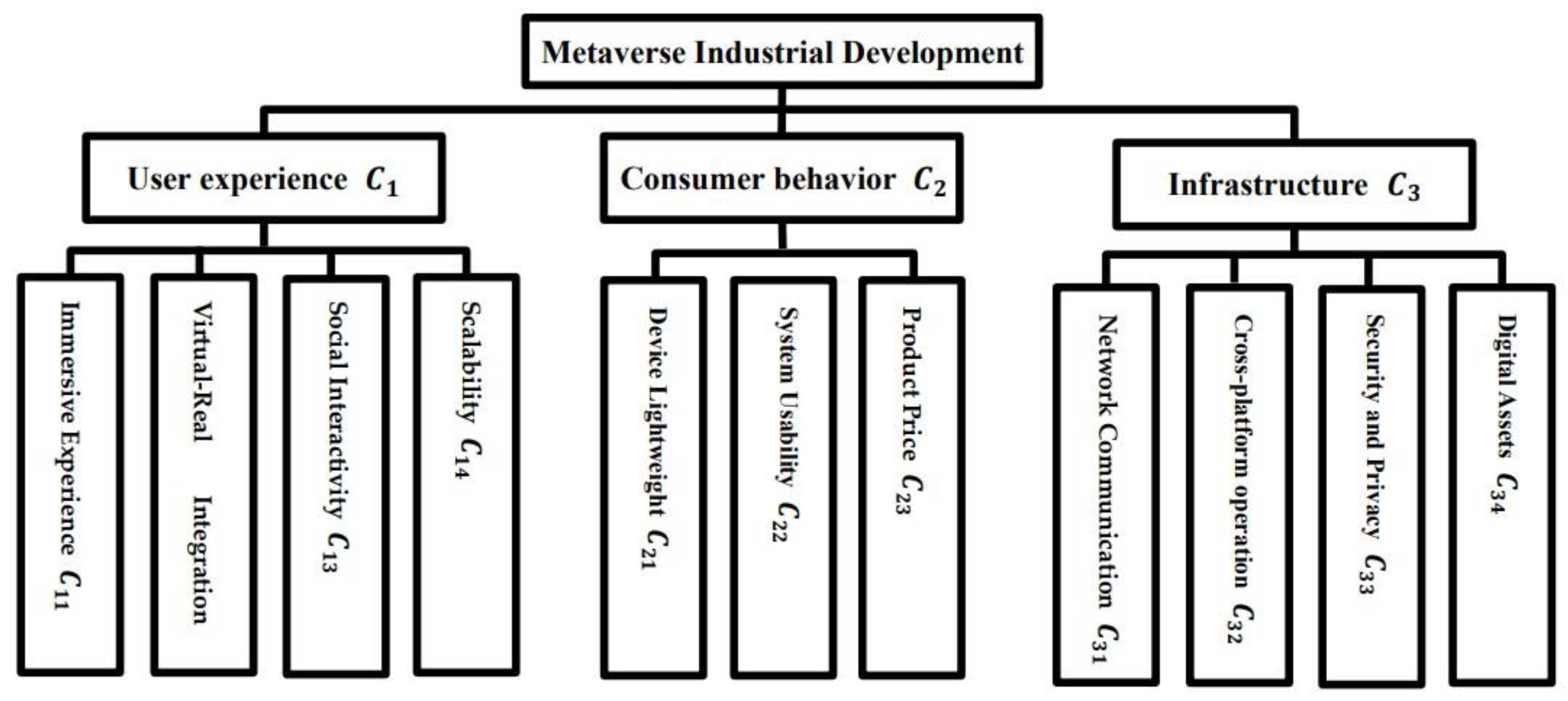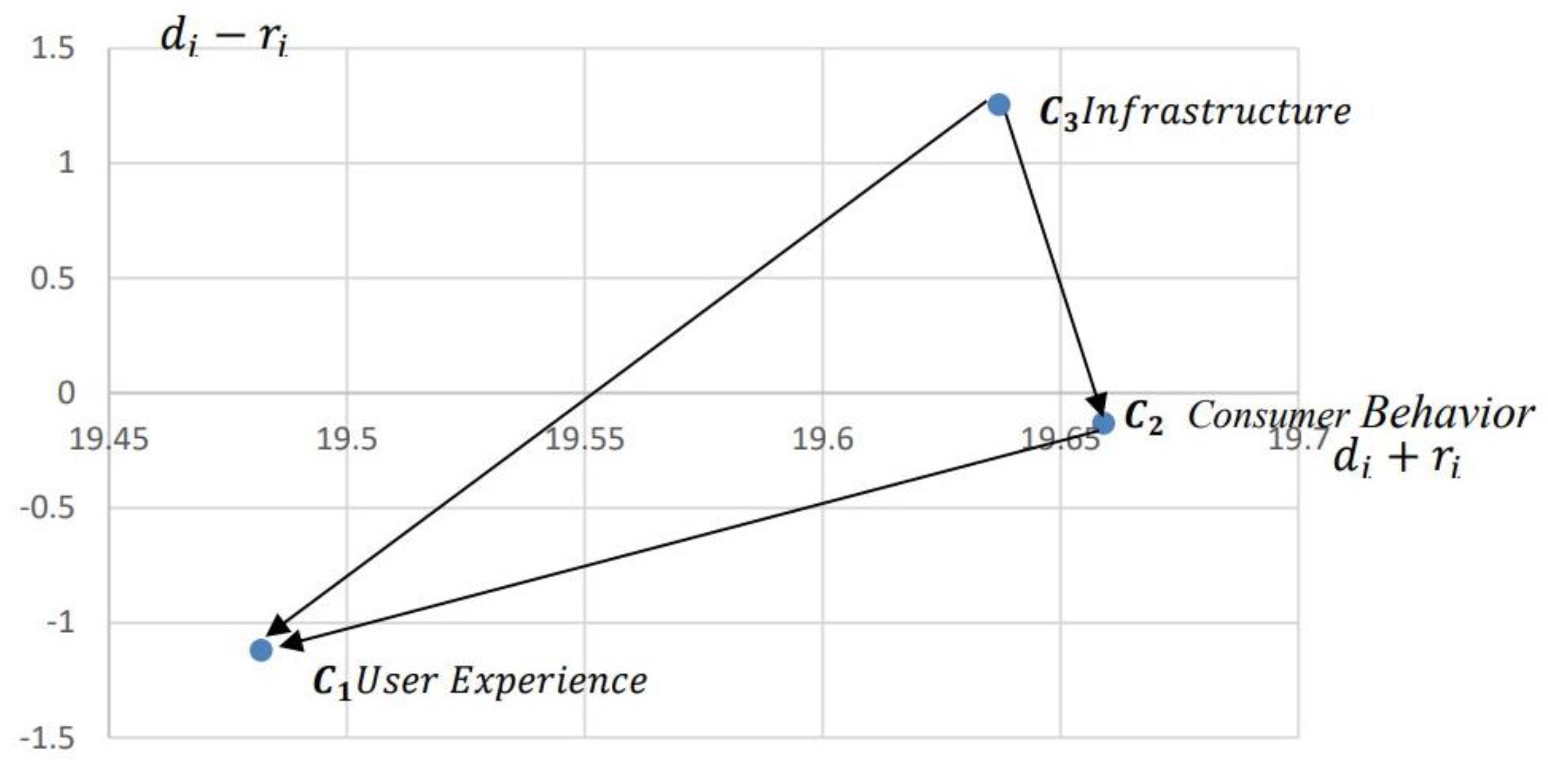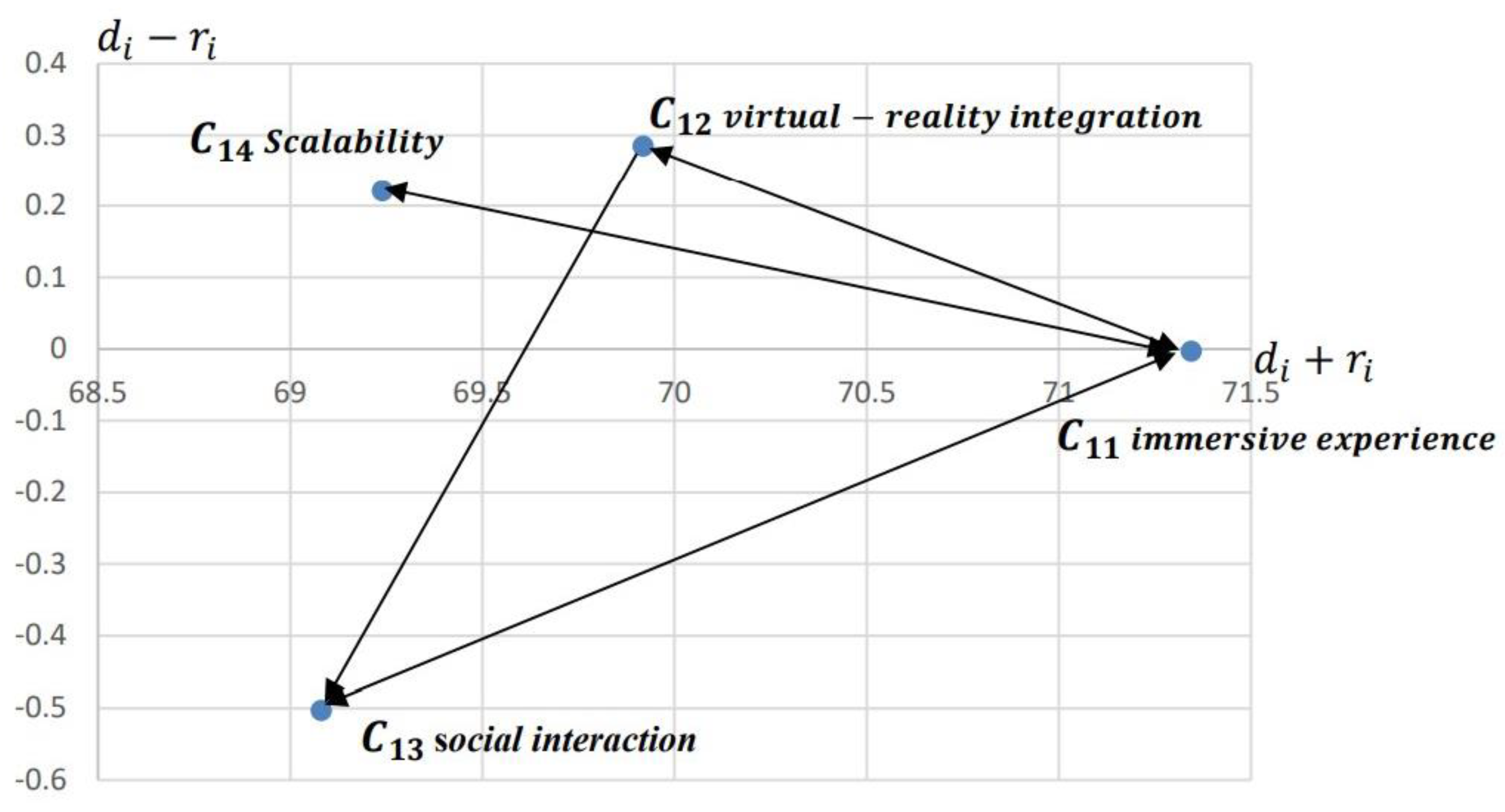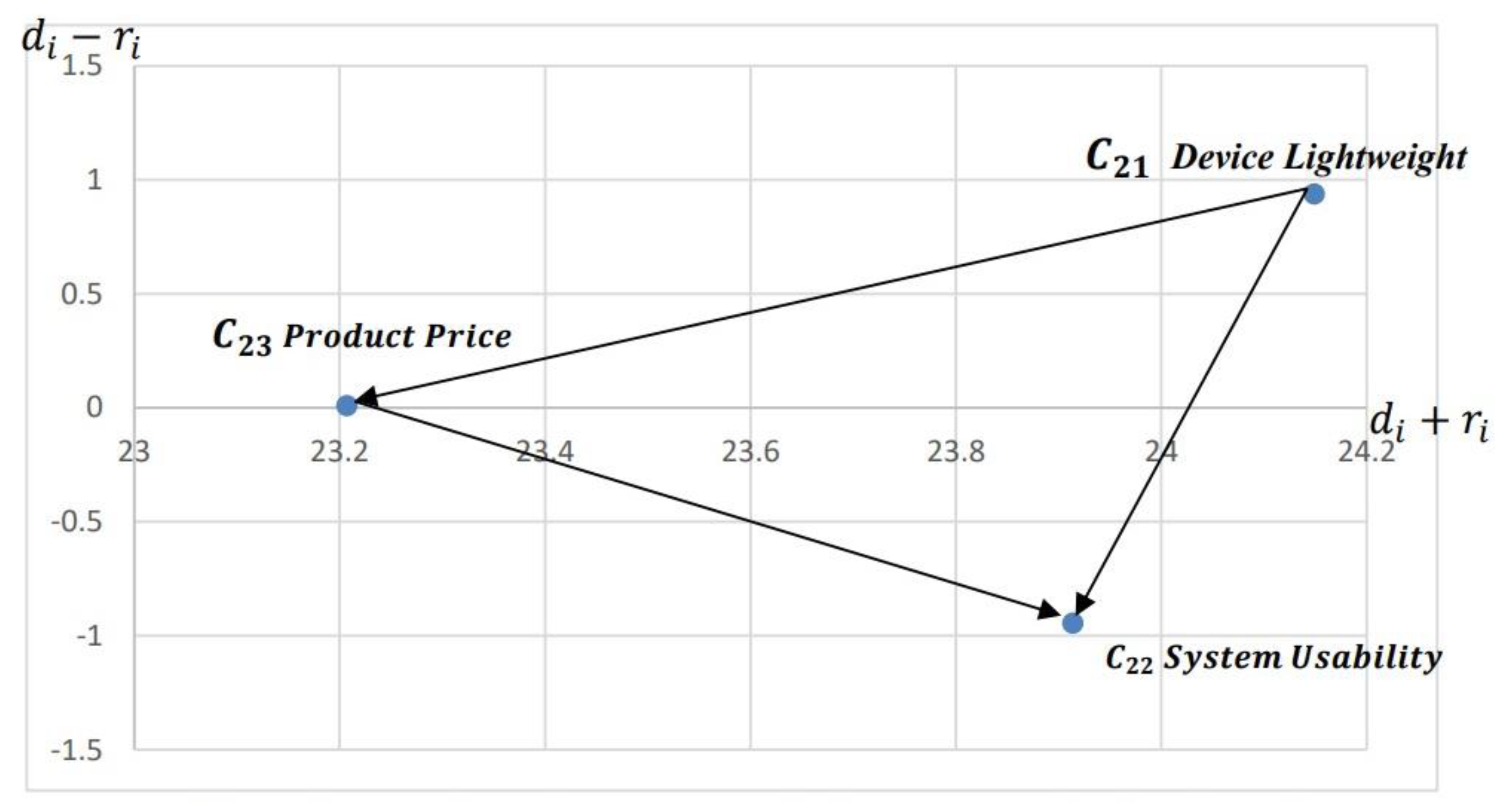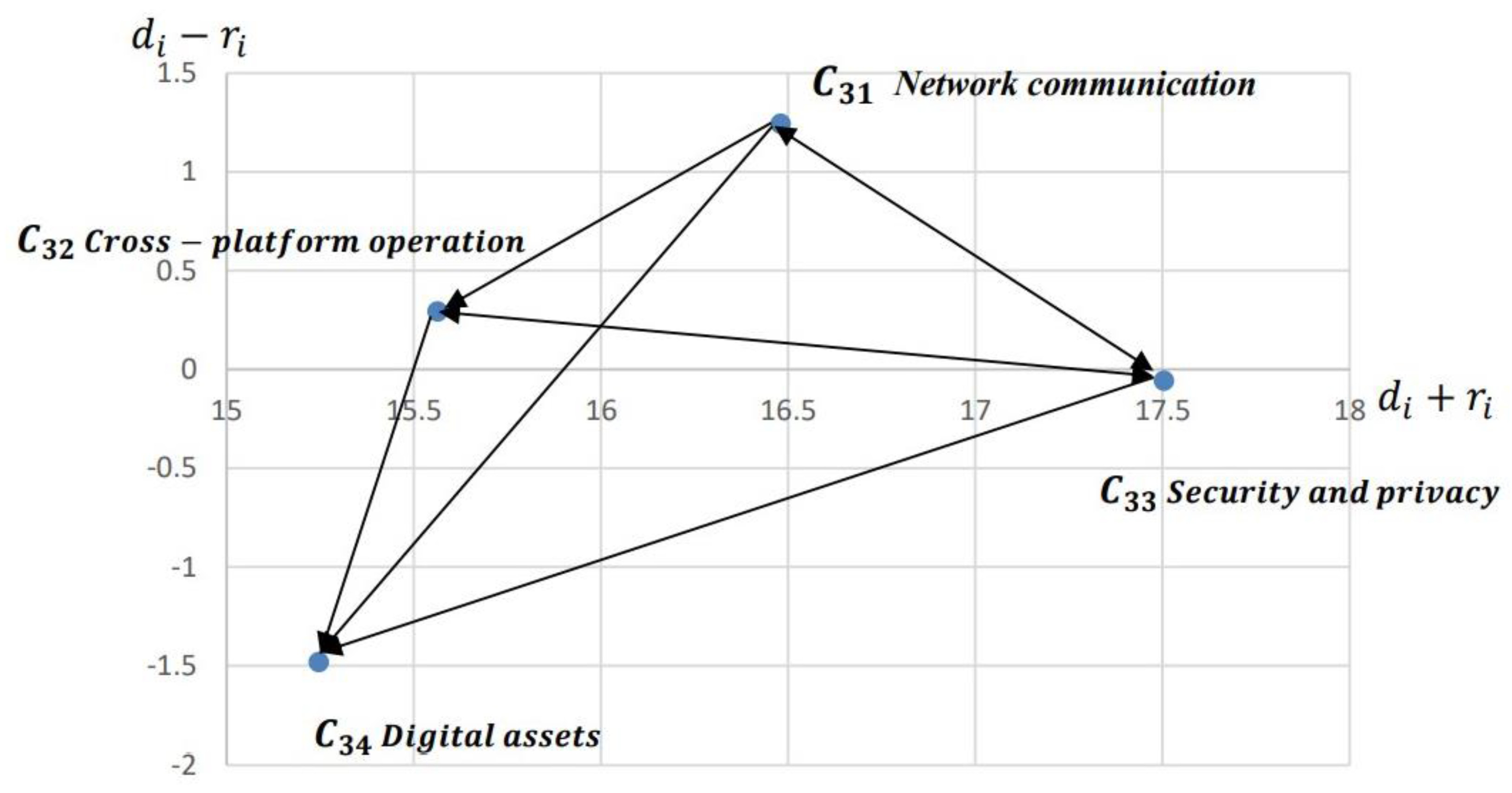1. Introduction
In recent years, there has been a notable progression and evolution in information technology, leading to the maturation of Internet-based technologies and applications [
1]. The advent of the smartphone has enabled individuals to swiftly access the Internet, engage in real-time online communication, participate in virtual meetings, conduct searches, access multimedia content, and participate in gaming activities at any time and from any location [
2].
With the rapid development of network technology, network applications are often not cross-platform, and their interfaces remain limited to computers and mobile devices, despite the powerful functions they offer. Recently, there has been a rapid development of software and hardware technologies, including 5G networks, cloud computing, virtual reality/augmented reality, the Internet of Things, blockchain technology, virtual currency NFTs, artificial intelligence, and digital twinning. The aspiration of establishing an integrated platform that bridges the virtual and tangible realms is poised to be actualized. Consequently, the concept of the Metaverse has been developed by integrating the virtual and the real worlds [
3,
4]. The overarching objective of the Metaverse is the integration of the virtual and the real worlds. This can be achieved through the utilization of virtual reality (VR), augmented reality (AR), and mixed reality (MR) technologies.
Despite the existence of VR/AR technologies for a considerable period, the applications of virtual reality remain largely confined to the consumer, healthcare, educational, and entertainment sectors [
4,
5,
6]. As indicated by data from the International Data Corporation (IDC), the global market for augmented reality and virtual reality (AR/VR) headsets are expected to decline 8.3% in 2023. However, the IDC predicted that the shipments of AR/VR headsets will grow in the future [
7]. Despite the introduction of new generations of VR headsets, consumers remain reluctant to purchase them due to their bulky size, inconvenience in transportation, and high cost [
8].
It can be reasonably asserted that the factors affecting the development of the Metaverse industry include the advancement of software and hardware technologies. The accuracy and update rate of sensors may be insufficient to prevent eye fatigue, dizziness, and other issues that could impair the user’s immersive experience. In the future, regardless of the platform ecology, hardware requirements, infrastructure, content presentation, and other factors, there is a need for constant innovation. The Metaverse industry will continue to expand in line with improvements in technological standards [
9,
10]. In order to understand the development of the Metaverse industry, it is essential to investigate the pivotal factors influencing its evolution. The technologies and products of the Metaverse industry are still in the initial stage of development [
11]. There are numerous factors affecting the development of the Metaverse industry, which are characterized by high market uncertainty, a high complexity of product development and use, and a paucity of technical and economic information [
12]. Considering these circumstances, it is challenging for managers to effectively identify the key factors influencing the evolution of the Metaverse industry and the interrelationships among these factors.
In the initial stage of industry development, a group of experts can provide a valuable and pragmatic assessment of emerging technologies and market trends, offering insights that can help navigate the inherent uncertainties in this early stage of growth. Therefore, this study assesses the pivotal factors influencing the evolution of the Metaverse industry through the insights of experts. However, the opinions of experts are frequently subjective and not readily quantifiable, rendering conventional crisp value expressions unsuitable. In such cases, linguistic variables are used in this study to offer an effective means of expressing the subjective opinions of experts. Furthermore, this study employs the fuzzy Delphi method [
13,
14] to integrate the fuzzy opinions of experts and utilizes the fuzzy DEMATEL method [
12,
14,
15,
16] to analyze the relationships of the key factors of Metaverse industry development. Ultimately, this study proposes a model for analyzing the key influencing factors for the development of the Metaverse industry, which can assist enterprises in conducting a systematic evaluation and analysis of the influencing factors and providing guidance on the future direction of the Metaverse industry.
3. Fuzzy DEMATEL Method
In the process of decision analysis, many influencing factors are frequently interrelated and exert a mutual influence upon one another. When experts evaluate the extent of mutual influence between influencing factors, the qualitative nature of the factors and the ambiguity of the subjective judgment of the experts often render it challenging to ascertain the degree of mutual influence. Accordingly, the fuzzy DEMATEL method represents an effective approach for addressing these issues and elucidating the interactions between factors [
14,
15,
36,
37,
38,
39]. The following steps constitute the fuzzy DEMATEL method [
15]:
Step 1: The initial step is to assume that there are n influencing factors to be evaluated.
Step 2: Using the linguistic variables as illustrated in
Table 3, each expert provides a judgment on the degree of influence between two factors, thereby constructing a fuzzy direct-relation matrix (
), as demonstrated below:
In this context,
represents the linguistic evaluation of the extent to which factor
i affects factor
j as determined by the
kth expert (with
k = 1, 2, …,
K). These linguistic variables can be represented by triangular fuzzy numbers [
30,
31,
32].
Step 3: Incorporate the linguistic evaluations of experts.
The intersection of the fuzzy valuation of each expert with at least one other expert’s fuzzy valuation indicates the existence of a consensus among all experts. Once it has been established that the opinions of the experts have reached a consensus, the fuzzy Delphi method is employed for integrating the fuzzy direct-relation matrix of each expert. The fuzzy direct-relation matrix of K experts is integrated as , where .
Step 4: The area method is employed to defuzzify
as demonstrated below [
27,
28]:
Step 5: Construct a direct-relation matrix as shown below:
In this context, represents the unambiguous value of the degree of influence exerted by factor i on factor j.
Step 6: The normalized direct-relation matrix
is constructed in accordance with the direct-relation matrix as follows:
Step 7: The total influence-relation matrix
is computed according to the normalized direct-relation matrix, as follows:
where
represents the identity matrix.
Step 8: It is assumed that
is represented by the matrix
. The influence value
and the influenced value
of factor
i are calculated as follows:
The value represents the degree to which factor i affects the other factors. The value signifies the extent to which factor i is influenced by the other factors. The value represents the degree of centrality of factor i among all factors. The value indicates the net influencing degree of factor i among all factors. A positive result indicates that factor i exerts influence over other factors, whereas a negative result suggests that factor i is the recipient of influence from other factors.
Step 9: The importance value of factor
i (
) is calculated as follows, based on the values
and
[
40].
In accordance with the importance value of factor
i (
), the normalized weight value of factor
i is calculated as follows:
Step 10: The construction of a causal relationship between factors.
The threshold value (α) for the degree of impact is calculated based on the average influence degree among the factors. According to the total influence-relation matrix (
T), the threshold value (α) can be defined as the following equation:
The construction of the cause-effect relation matrix (
C) is based on the total influence-relation matrix (
T) and the threshold value of the degree of influence (α). The following steps are required:
where
A value of equal to 1 indicates that factor i exerts an influence on factor j. Conversely, a value of equal to 0 signifies that factor i has no impact on factor j.
5. Conclusions
In recent years, the Metaverse industry, which emphasizes the integration of virtual and real, has emerged as a key area of interest for enterprises. Consequently, when investing in the Metaverse industry, it is imperative for enterprises to first grasp the pivotal influencing factors to optimize the probability of successful Metaverse product and market development. Many quantitative and qualitative factors should be considered for Metaverse product and market development. Because of the uncertainty and ambiguity of technology and market, it is possible to employ a combination of fuzzy set theory and multi-criteria decision analysis to analyze the pivotal factors influencing the development of the Metaverse industry.
This study employs the fuzzy Delphi method, a technique for integrating the evaluation of the importance of influencing factors by multiple experts, to identify 11 key impact factors affecting the development of the Metaverse industry. The method is based on linguistic variables. To facilitate analysis and effectively grasp the relationship between the factors, this study divided the eleven key impact factors into three major dimensions, in consideration of their characteristics. Accordingly, this study employs the fuzzy DEMATEL method to compute the weights and causal–effect relations pertaining to the influence dimensions and factors on the development of the Metaverse industry. By evaluating the causal–effect relation between the dimensions and key factors, it is possible to gain an understanding of the driving dimensions and the driving key factors, which will, in turn, improve the possibility of success in the Metaverse industry.
This study presents a systematic analysis model of the key factors influencing the development of the Metaverse industry. This study makes two principal contributions to the field. (i) The use of linguistic variables through the fuzzy Delphi method can effectively screen the key factors affecting the development of the Metaverse industry. (ii) The fuzzy DEMATEL method allows for the proposal of a systematic analysis model, which can effectively evaluate the importance of the key factors in the development of the Metaverse industry and its causal relationship. This approach enables enterprises to gain a more accurate understanding of the characteristics of key factors, thereby enhancing the feasibility of developing the Metaverse industry.
The following recommendations are made for future research on this study. (i) In future research, the utilization of alternative fuzzy multi-criteria decision-making methods for analysis may be considered to enhance the acceptability of results. (ii) It is acknowledged that the number of influencing factors will have an impact on the assessment of the development of the Metaverse industry. Therefore, in future studies, the potential merits of collecting influencing factors at a greater number of levels for the screening of key factors may be explored to enhance the value of the practical application.
